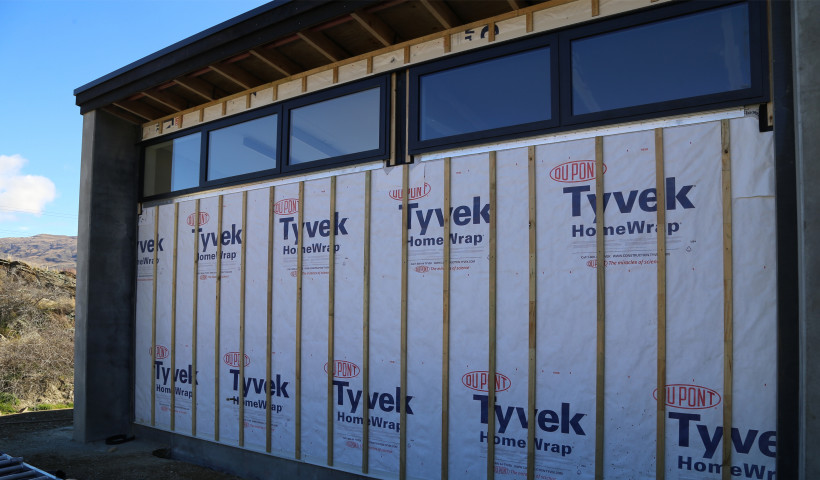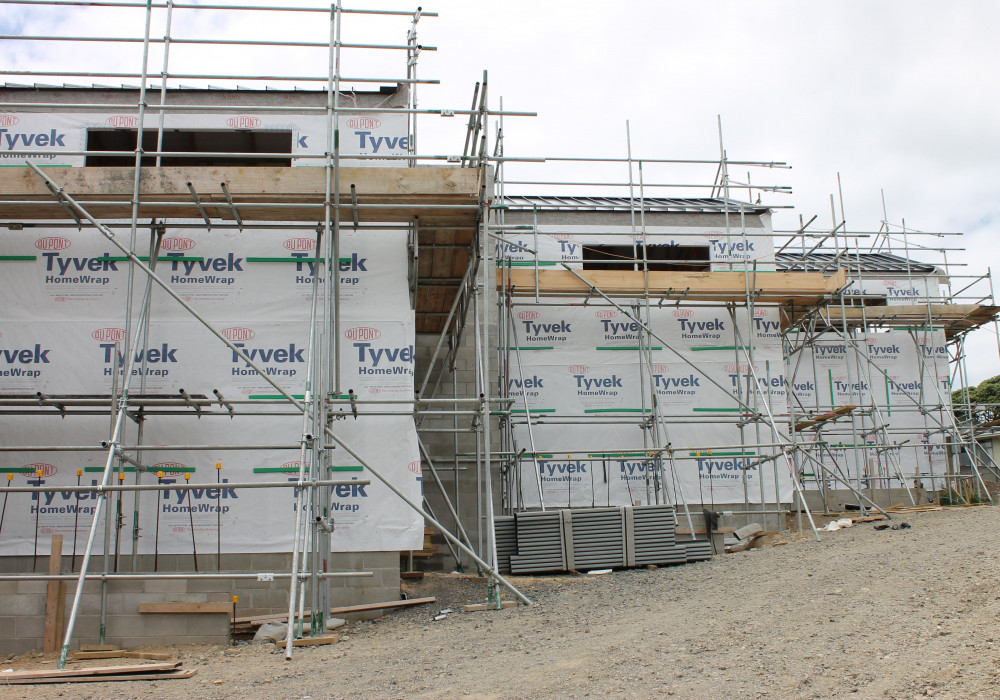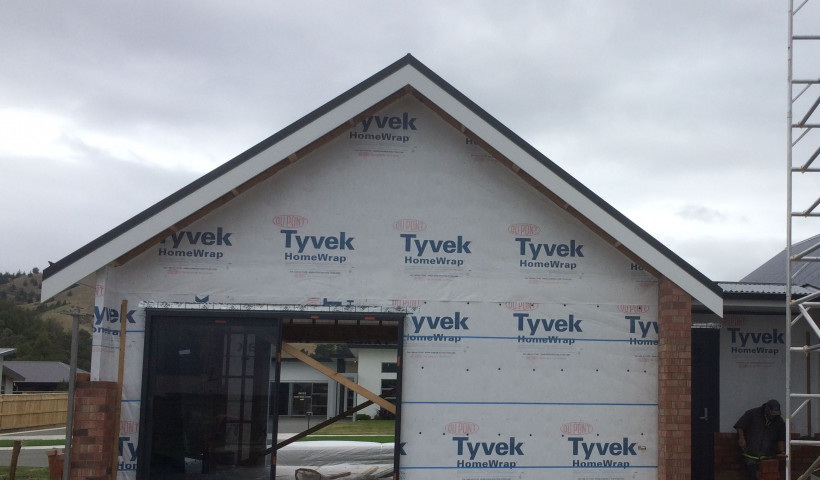
Tyvek HomeWrap has been used internationally for over 50 years in a wide range of wall systems including the usual construction methods used in New Zealand, with both timber and metal framing.
As a requirement of NZBC E2/AS1, a suitable wall underlay meeting the requirements of Table 23 must be used over Rigid Underlays as per Clause 9.1.7.2. Any other system is outside the scope of the Acceptable Solutions. As Tyvek HomeWrap meets the requirements of Table 23, it is suitable for use in Extra High and SED wind zones as defined in the NZ Building Code 3604 when used in conjunction with a Rigid Wall Underlay either 7mm H3 plywood, oriented strand board (OSB) or 6mm fibre cement.
HomeWrap ensures protection from rain and moisture absorption of the rigid underlay, allowing early commencement of interior work, and cost saving as the nail holes/joints need taping. Without an underlay, the rigid air barriers can absorb in excess of 1L per square metre, prolonging the drying of the wall structure and delaying interior insulation and lining.
Tyvek HomeWrap can be left exposed for up to 120 days after installation due to the very High UV resistance and protection against weathering. It is part of an internationally recognised system which includes DuPont FlexWrap and flashing tapes designed for use in all wind zones when used as part of an approved system.
Tyvek HomeWrap is well suited for use as an underlay over rigid all underlay systems such as plywood, oriented strand board (OSB) and fibre-cement sheeting. Tyvek HomeWrap has two key features that are especially relevant:
- Excellent water resistance and hold out ensuring the substrate remains dry once covered
- With the high moisture permeability, any construction moisture on the substrate passes through the underlay as moisture vapour and is safely passed to the exterior via the cavity













 Case Studies
Case Studies













 Popular Products from Tyvek
Popular Products from Tyvek


 Most Popular
Most Popular


 Popular Blog Posts
Popular Blog Posts